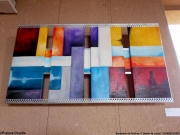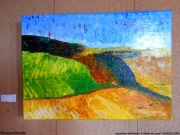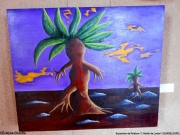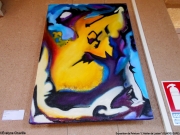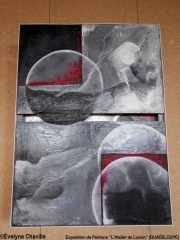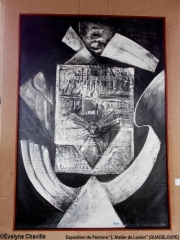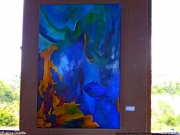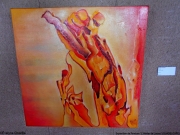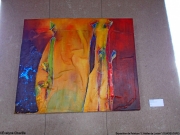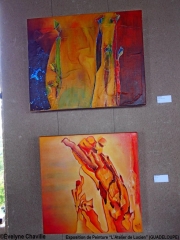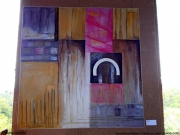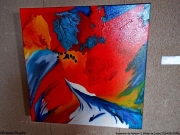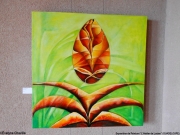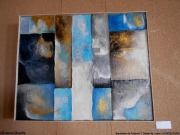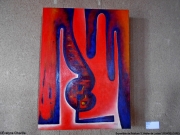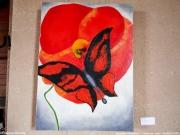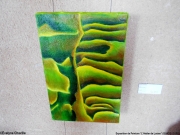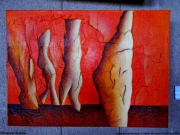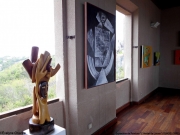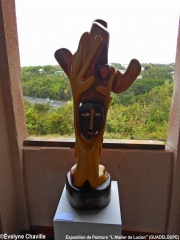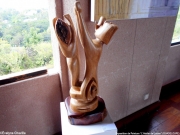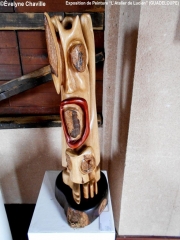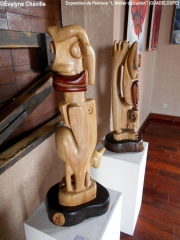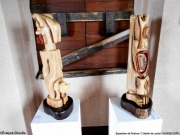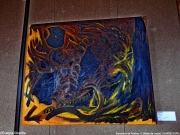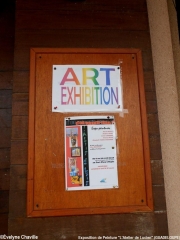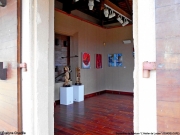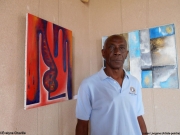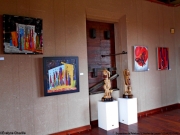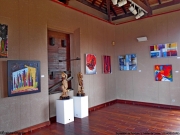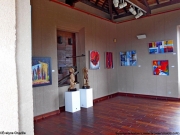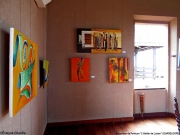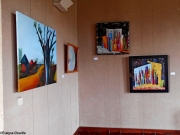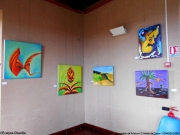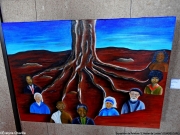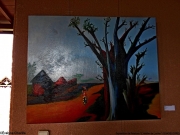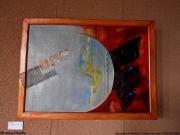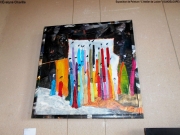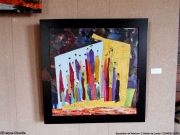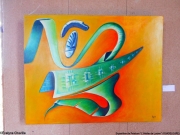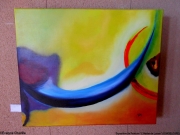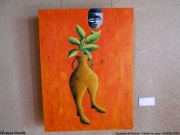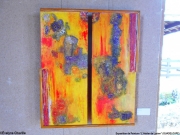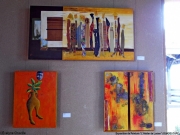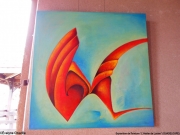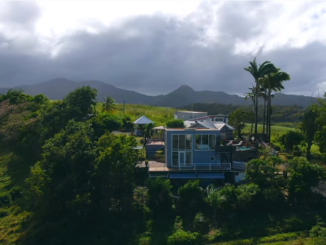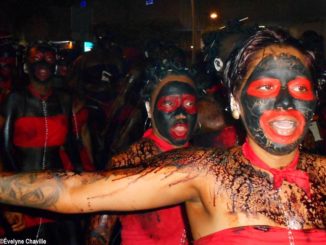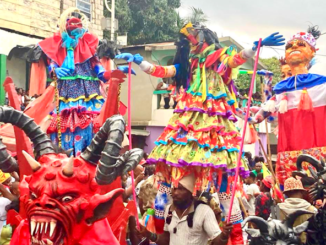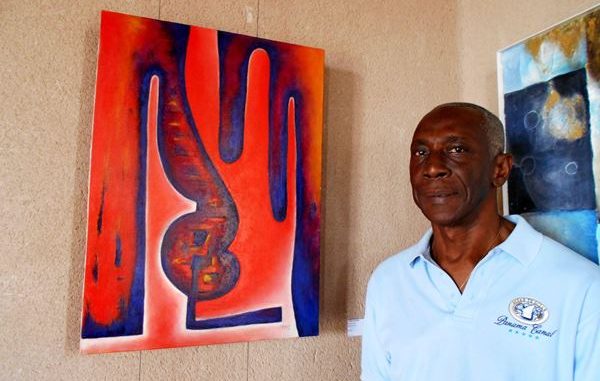
From 6 to 22 April took place at the Fort Fleur d’Epée in the commune of Le Gosier (Guadeloupe) the exhibition entitled “Where do we come from?” by the painter Lucien Léogane and four students from his studio namely Marie Bogat, Nadine Henri, Viviane Pelus and Élisabeth Tharsis-Mugnier. On the occasion of this annual meeting with the public, they had invited the sculptor with the chainsaw, Alex Boucaud.
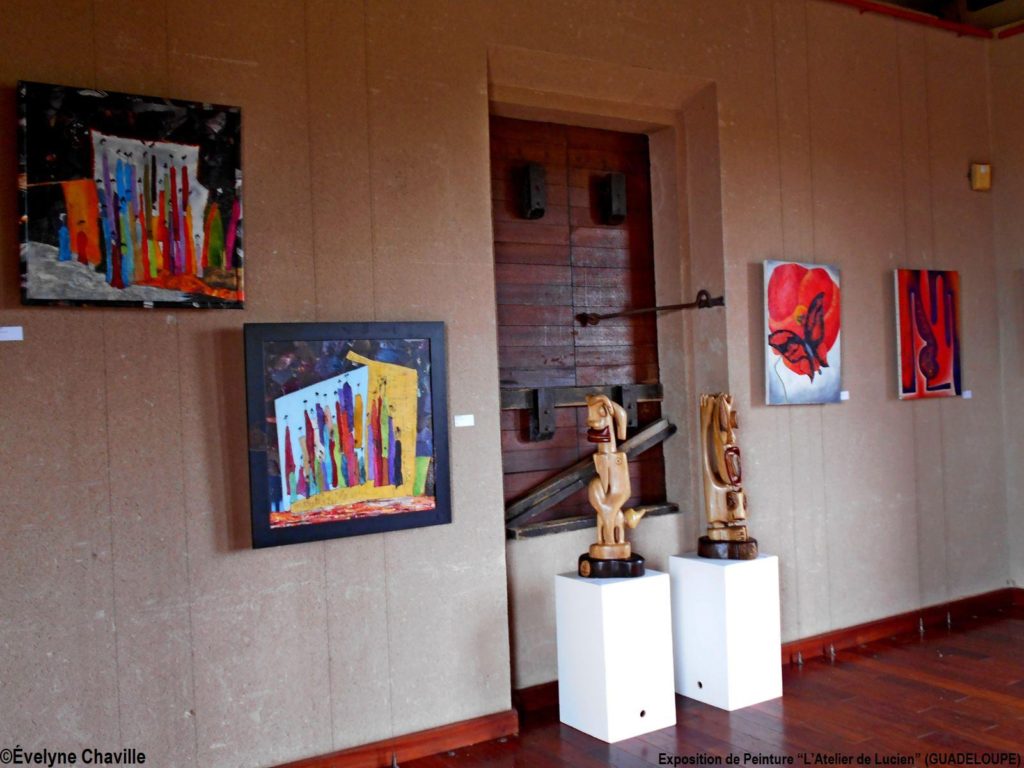
It was in the very nice environment of the Fort Fleur d’Epée which dates from the 18th century and which overlooks part of Le Gosier that was held the exhibition of “L’Atelier de Lucien” (Lucien’s studio) on the theme “Where do we come from?”. This annual meeting gathered around Lucien Léogane four women painters – Marie Bogat, Nadine Henri, Viviane Pelus and Élisabeth Tharsis-Mugnier – as well as a special guest, the sculptor with the chainsaw Alex Boucaud.
During these fifteen days, Lucien Léogane and his students presented to the public about thirty works produced during these last months. “The students who attended classes regularly are exhibiting today and I’m very satisfied with their work, I see their progress over the years.There is a beautiful harmony, we do not know who is the student, who is the teacher”, said Lucien Léogane with a smile. By joining the studio, students may be of different levels but the teacher reassures the beginners about their ability to progress at their own pace.
Most paintings were abstract with bright colors. “From the defined theme, each student is free to produce his works. For my part, when I began to paint, my paintings were figurative, they almost had to look like photos. Then, I started the abstract style because I noticed that the public did not see the message. I told myself that I had to change so I used abstract painting. Now, I feel that the message is better understood, it is caused by emotion”, explained the artist.
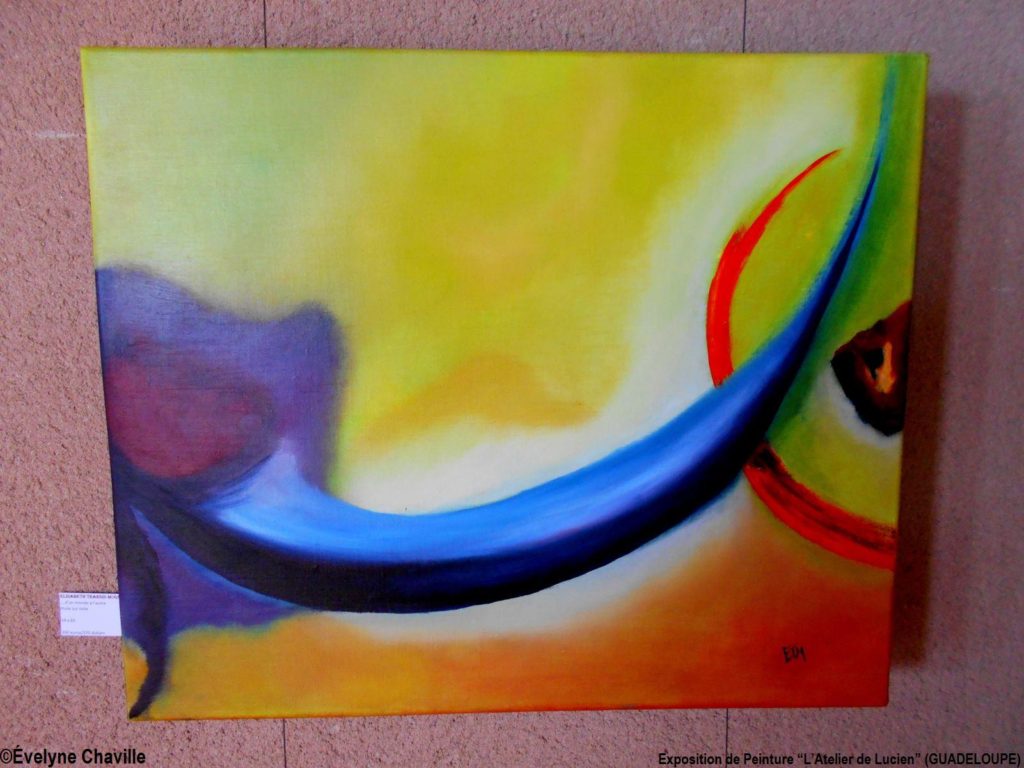
Students with a passion for painting
Lucien Léogane began to paint at the age of 17. After his studies in France, at the age of 29, he returned to his native island, Guadeloupe, to teach plastic arts for about forty years. He has been retired for two years. So, despite this well-deserved rest, he continues to share his knowledge but with a particular audience : adults. “The studio always was opened even when I worked on the High School or I gave classes at the Centre d’Arts Plastiques in Le Lamentin, at the Centre des Métiers d’Arts in Pointe-à-Pitre or elsewhere. I do not know exactly how many students have already frequented there but, they are many. There were young people but, today, I only accept adults because they have another state of mind, they know what they want and they are more regular”, he said.
Twice a week (on Wednesday from 4:00 pm to 7:00 pm and on Saturday from 9:00 am to 1:00 pm), his students go to the workshop installed at his house in the countryside of Sainte-Anne. Some of them have been attending his teaching for several years now. Most now attend his classes after attending other painting studios on the island. “My students are happy to meet at the studio to paint because there is an atmosphere that allows them to relieve stress and interact with each other. Two people even drive for miles because they come from the town of Deshaies; one of them met me when I taught courses at the Imagine Art gallery which has since been closed. All my students are passionate about painting”, said Lucien Léogane. The painter remembers one of his students – Louis – who is dead now and who told him during his illness how much he missed his artist friends and this special atmosphere in the studio… In 2012, the team had organized an exhibition to pay tribute to him.
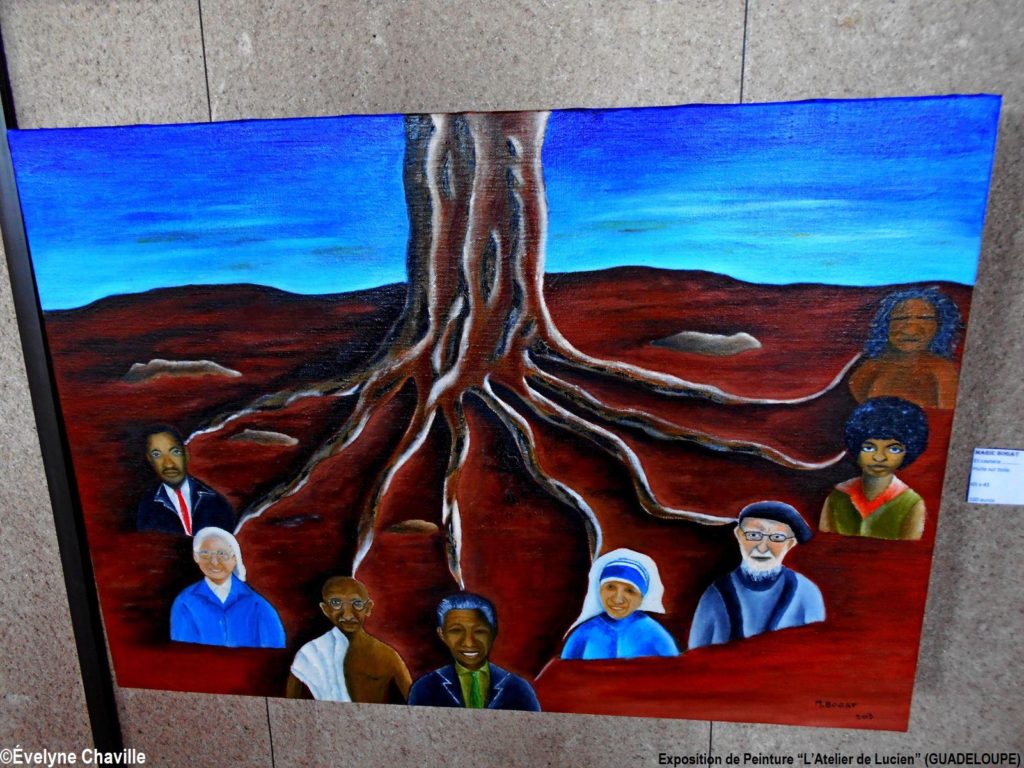
One of the inventors of the “Koukara”movement
Lucien Léogane went on to say: “at the studio, it’s not “academic”, we do some research, we make our supports etc. A few years ago, the painter Klodi Cancelier and I met a Korean woman in Strasbourg, we invited her to Guadeloupe and she taught us how to make old-fashioned paper, but this work was not understood (…)”, he said.
It should also be noted that, in 1983, with other Guadeloupean plastic artists such as Jacques Lampécinado, Félix Beltan, André Bracy and Klodi Cancelier, Lucien Léogane had initiated the artistic movement called “Koukara”. “The aim was, among other things, to connect man to nature. Our body is fiber and we had decided to incorporate in our works natural fibers of coconut, latanier palm etc. We also have had the opportunity to travel to Canada and the United States for example to participate in events and meet artists. There was a certain dynamism. Unfortunately, we realized that some local artists who said to be a part of this new artistic movement in fact “plundered” our ideas without proposing anything (…) Finally, we did not continue this work on materials, fiber”, he said. Lucien Léogane’s works in this exhibition entitled “Where do we come from?” were devoid of any fiber…
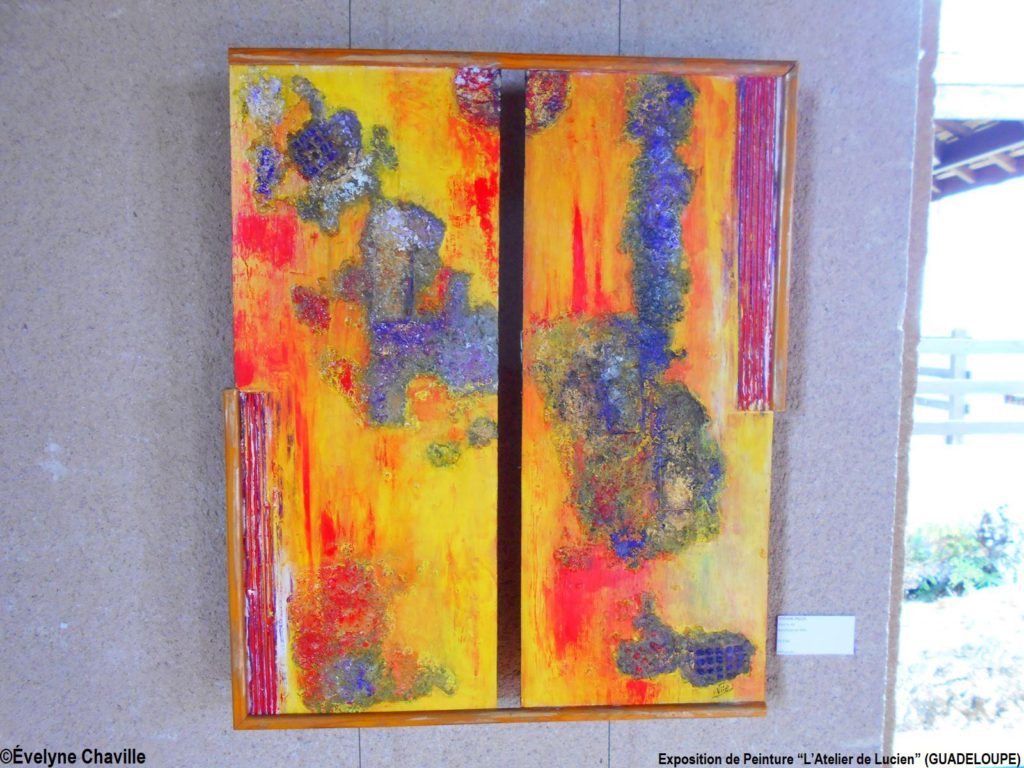
Some recognition for forerunners
Today, the artist does not hide his bitterness. He has the impression that the painters who fought for the recognition of this artistic discipline in Guadeloupe are forgotten. He has the impression that everything moves faster. “Here, in painting, there is no link with the past. There is a lack of recognition for elders. When I was young, three painters of the Youth Center of Pointe-à-Pitre taught me painting. Messrs Bocage, Adolphe and Samyde (…) We are in a change of look, in a way to be and this does not only exist in Guadeloupe… Today, everything must be easier, faster because some people produce a work like a photo taken with a smartphone, this carnal and passionate relationship with the work no longer exists. Some young people just take a few painting lessons and think they are experienced painters, it’s already happened in my studio (…)”, said Lucien Léogane.
Next year, the annual exhibition with his students will be entitled “Who we are?”. In addition, the painter hopes, one day, to continue his artistic work on paper and, this time, it will be better understood. Lucien Léogane also think of giving up the abstract style and returning to realism. “Unusual realism”, he said.

